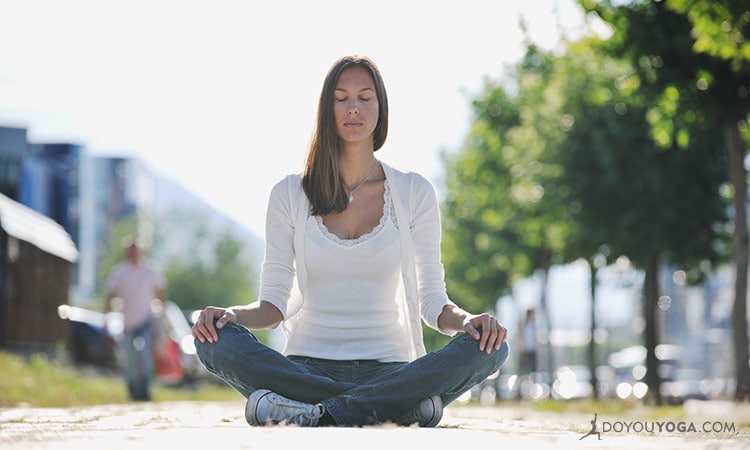Meditation is more than just sitting quietly with your eyes closed. It’s been shown that regular meditation increase focus, decreases the production of stress hormones, and even increases your body’s production of anti-aging hormones. But if meditation just sounds like a ‘chore,’ you likely won’t continue long enough to reap the rewards.
If this sounds like you, don’t despair! The five styles of meditation below are just a sample of the many styles out there, and you’re bound to find one that speaks to you. Give these styles a try to see what’s right for you.
1. Movement Meditation
Movement meditation is exactly what it sounds like—meditation while moving, rather than sitting still. You can meditate while dancing, walking, or with light martial arts, like Tai Chi. The key is to go slowly and focus your consciousness on the flow of energy through your body as you move. This style cultivates awareness of your body and how it connects with itself, with the earth, and everything around you. With movement mediation, you should be as mindful of your surroundings as you are of your thoughts.
Why Try Movement Meditation: This style is ideal for anyone who has difficulties sitting still for more than a few minutes. If you’re just starting out with meditation, this is a great way to put your best foot forward—literally! It’s easier to be mindful of your body while moving than when you’re simply sitting or lying down. Plus, you’re less likely to become distracted by that itch on your nose when the rest of your body is engaged.
2. Guided Meditation
In guided meditation, you are verbally led into a specific meditation experience. Your guide might instruct you to focus on specific areas of your body using imagery, such as “like a ball of light expanding in your chest,” or guide you in visualizations, like flickering flame or a peaceful landscape, to achieve a greater sense of relaxation. Guided meditations can easily be done at home with pre-recorded audio.
Why Try Guided Meditation: Guided meditation allows you to sit back and focus on someone’s voice, which makes it another great place to start for anyone daunted by idea of quieting the mind and thinking about nothing. But guided meditation isn’t just for beginners—you might be surprised by where your guide leads you. Sometimes, giving up control is the best way to find out what’s really going on below the surface of your mind.
3. Mantra Meditation
Mantras uses sound vibrations to create spiritual energy to heal, promote creativity, and commune with the divine. In Buddhist and Hindu traditions, mantras are even believed to be capable of drawing a particular deity towards you. Secular uses of mantras are no less powerful. Rather than simply repeating “Om,” a mantra can be any combination of sounds, words, or phrases that awakens your spirit. The important thing is that the mantra feels deeply personal and moves you on an emotional and spiritual level.
Why Try Mantra Meditation: Mantras can help you stay focused on the present while meditating. When your mind does wander–as it inevitably will—you can always just refocus on the sounds. This style can also silence the voice of your inner critic. When your mind strays to thoughts of your flaws and failures, an empowering mantra can replace negative feelings with positivity, forming new mental connections with long-lasting benefits.
4. Mindfulness Meditation
Mindfulness meditation teaches non-judgmental focus on the present moment. You simply observe whatever thoughts and feelings arise without engaging them. If you’re feeling distracted by soreness in your body, or your mind keeps returning to that upcoming project you have, that’s totally okay. Simply acknowledge those thoughts and sensations without assigning them truth or value. The goal isn’t to clear your mind; it’s to cultivate moment-to-moment awareness of your mental, emotional, and physical state.
Why Try Mindfulness Meditation: Mindfulness is one of the most thoroughly researched forms of meditation, and the results are pretty much unanimous: mindfulness is an effective tool for reducing stress and treating anxiety, depression, and addiction. Mindfulness requires a different perspective than most of us are used to, especially when it comes to observing thoughts and emotions without judgment. If you struggle with being carried away by your emotions, this type of meditation just might change your life.
5. Transcendental Meditation
Transcendental Meditation, abbreviated as TM, was pioneered by the famous spiritual leader Maharishi Mahesh Yogi. Unlike other forms of meditation, which can be learned through videos or recordings, TM is always taught in person by a certified instructor. During TM, you close your eyes and silently repeat a mantra given to you during the course. The mantra, which is never said aloud, is a gentle vehicle to calm the mind, striving for a state of consciousness where thoughts occur in a stream, one after another.
Why Try Transcendental Meditation: TM is the most widely practiced form of meditation in the world, which means this style comes with a strong spiritual community. Once you’ve “graduated” from the TM course, you check in monthly with your teacher to make sure you’re practicing correctly, and with the many TM residence courses and advanced trainings, students never stop learning. If simply meditating on your own doesn’t inspire you, joining the Transcendental Meditation community might be just what you need.
What style of meditation do you practice? Do you practice more than one? Let us know below!


